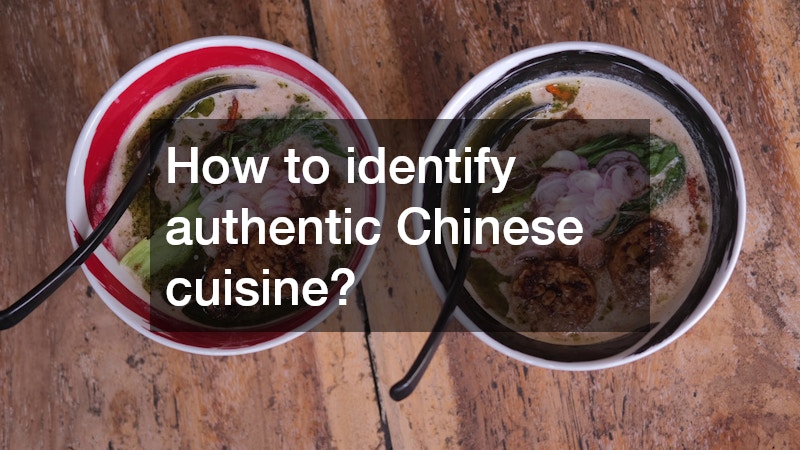Discovering authentic and delicious Chinese food in your area can be an exciting culinary adventure. Whether you’re new to the cuisine or a seasoned enthusiast, knowing where and how to find the best options is essential for a satisfying dining experience. In this guide, we will explore key questions and strategies to help you locate the best Chinese food in your area, ensuring every meal is a delight.
What are the best Chinese restaurants in my area?
Utilizing Online Reviews and Ratings
Online reviews and ratings are invaluable tools in the quest for top-notch Chinese eateries. Platforms like Yelp, Google Reviews, and TripAdvisor aggregate the experiences of countless users, providing insights into which restaurants might satisfy your culinary cravings.
By reading a variety of reviews, you can identify a consensus on which establishments are worth visiting based on consistent feedback.
These platforms often include detailed reviews that discuss everything from food quality to service. Look for restaurants with a high number of positive reviews, as this often indicates reliability and consistency. Remember that a few negative reviews are common, but the overall rating and recent feedback can guide your choice.
Many review platforms also allow you to filter restaurants by specific criteria, such as location, price range, and cuisine type. This feature can help streamline the process of finding a Chinese restaurant that aligns with your preferences. Additionally, photos uploaded by users can give you a visual preview of the dishes and ambiance.
Seeking Recommendations from Locals
Locals can be the best source of insider information for discovering Chinese food gems in your area. Engaging with community members through social media groups or forums can lead you to restaurants that might not be highly visible online. These hidden gems often deliver an authentic experience by staying true to traditional recipes.
Conversations with locals can reveal established favorites that maintain a loyal customer base. Local insights often include recommendations for specific dishes, which can enhance your dining experience by guiding you toward signature items. Tapping into local knowledge also enriches your understanding of the culinary landscape.
In addition to online forums, speaking directly with people in your community, such as coworkers or neighbors, can yield valuable suggestions. Personal recommendations often come with stories about past experiences, adding an element of narrative to your dining adventure. This personalized advice can make your restaurant visits more meaningful and satisfying.
Checking Awards and Recognitions
Restaurants recognized by culinary awards or featured in renowned food lists often offer superior dining experiences. Awards like the Michelin Guide or James Beard Awards indicate a commitment to culinary excellence and can guide you to top-tier Chinese eateries. Such accolades often bring recognition to establishments that excel in authenticity, taste, and overall experience.
These recognitions are not always limited to upscale dining; they can also highlight exceptional casual or local eateries that excel in their specializations. Exploring awarded restaurants often guarantees a high standard of food quality and service. While these places might be more well-known, they often live up to their reputation, ensuring a worthwhile visit.
To further authenticate the quality, look for local awards or recognitions by regional food blogs and magazines. Regional accolades can reveal outstanding choices that may not yet be recognized nationally. This strategy allows you to explore a mixture of both celebrated and undiscovered dining venues.
How to identify authentic Chinese cuisine?
Understanding Regional Specialties
Chinese cuisine is incredibly diverse, with each region offering unique flavors and specialties. Identifying a restaurant known for regional cuisine, such as Sichuan’s bold flavors or Cantonese’s subtleness, can help ensure authenticity. Understanding these differences broadens your culinary experience and helps you appreciate the depth of Chinese food culture.
Regional specialties often include specific ingredients that are commonly used within that locale. For example, Sichuan cuisine is known for its liberal use of chili peppers and Sichuan peppercorns, which provide both heat and a numbing sensation. Recognizing these characteristics can help distinguish authentic dishes from more generic offerings.
Observing the Menu Diversity
An authentic Chinese restaurant typically offers a menu that reflects a wide range of dishes and ingredients. A diverse menu showcases the establishment’s ability to serve genuine Chinese dishes, as well as its skill in preparing traditional recipes. Pay attention to ingredients that are staples in Chinese cooking, such as ginger, garlic, soy sauce, and sesame oil.
Look for menus that include a balance of meats, seafood, tofu, and vegetables, indicating a respect for the varied diet in traditional Chinese culture. Options like dim sum, hot pots, or lesser-known dishes can be good indicators that a restaurant is committed to authenticity. Menu diversity should allow you to explore different cooking styles and flavors.
Recognizing Culinary Techniques
Traditional cooking methods are often the backbone of authentic Chinese cuisine. Techniques such as stir-frying, steaming, roasting, or braising contribute significantly to the final dish’s flavor and authenticity. Mastery of these methods indicates a proficiency in Chinese cooking that goes beyond surface-level preparation.
For instance, dishes that emphasize wok hei, the ‘breath of the wok’, rely on swift, high-heat cooking that imparts a unique flavor. Observing how the chefs engage with these traditional techniques can offer clues about the authenticity of the food. The presence of these cooking methodologies often separates genuine establishments from less authentic ones.

